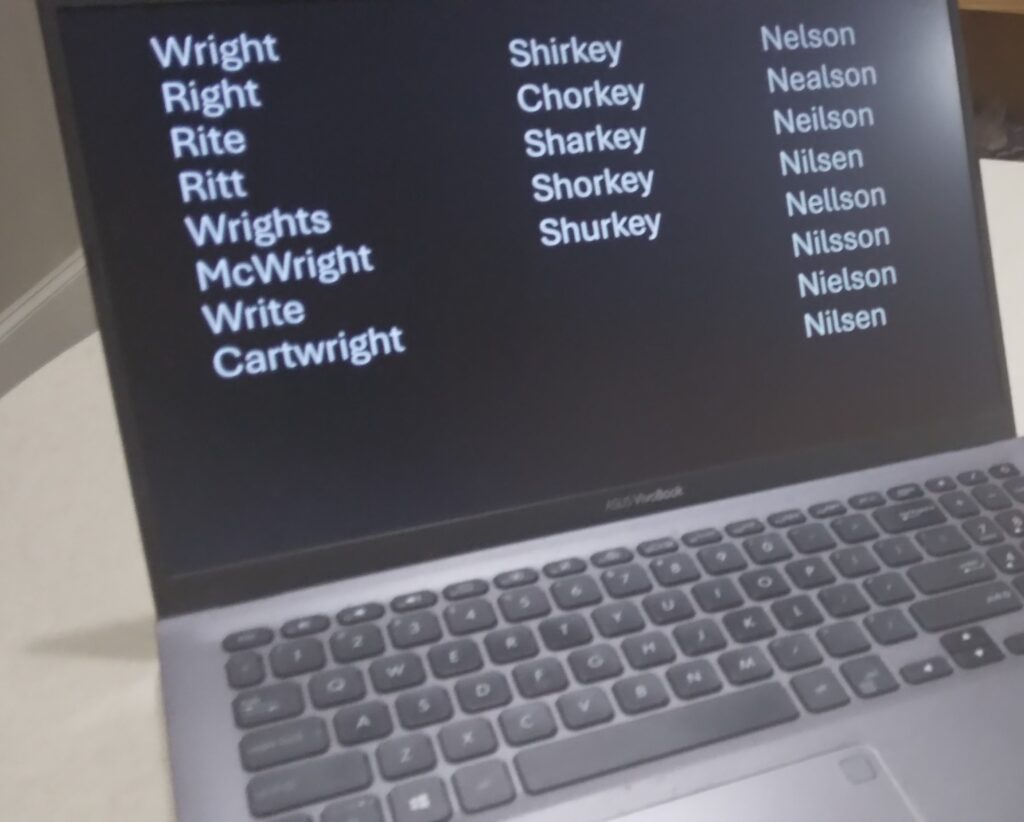First Things First
Before we dive into the census, let’s talk about where the census comes from and things we need to keep in mind as we use the census.
The U.S. Constitution directed the Congress to count the population every ten years. The census has been conducted the first year of every decade ever since. Fortunately, every census is available except for the 1890 census, which was destroyed as a result of a fire in the Department of Commerce building in 1921. As a result all but a small fragment of that census was lost.
The census is divided into two parts, the population schedule and the non population schedule. The population schedule’s purpose is to count every person in the United States. The non population schedule counts a representative sample of the entire population. One example would be the agricultural schedule, which records the farmers and ranchers in the country and details about their production.
One Name, Many Options

When looking at the census it helps to remember that most of our ancestors were not as educated as we are today. Many of our ancestors either couldn’t read and write or were recent immigrants and did not yet speak English. To make things more interesting, spelling was not standardized until the early 1900s.
What this means for us as students of the census is that when our immigrant ancestor told the census taker their name, the census taker wrote down what they heard, which may have been effected by a strong Irish or German accent. It also means that until after 1900 writing the name Knox as Nocks was not necessarily wrong because there was nothing dictating which one was correct.
When reviewing the census we need to look for any variations we can think of for our ancestor’s names. If you had an ancestor named Thompson, look under Thompson first. If you aren’t successful, look under Tomson, Thomson, Tomsun, Tontsand, and so on.
AI to the Rescue

One good thing that AI has done for us is that most search engines on family history sites will give us name variations when you do a search. There are limits to their effectiveness, so you should do additional searches for very different spellings.
Next time we’ll look at some great tools to use to make researching the census much easier. Not only are they helpful, they’re free!
If you need help interpreting complex records, or just don’t have the time to learn research on your own, let us know! Researchers at Heroes of the Past have read through thousands of pages of census and other records and excel at interpreting what they mean for your ancestors. Contact us today to begin your discovery!